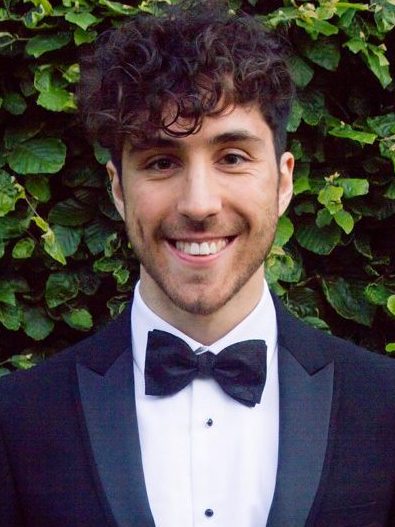Ezequiel Rodriguez Chiacchio

Ezequiel Rodriguez Chiacchio
Member of Homerton College
PhD student in Dr Nunnenkamp's group
Office: 515 Mott Bld
Phone: +44(0)1223 3 37460
Email: eir23 @ cam.ac.uk
TCM Group, Cavendish Laboratory
19 JJ Thomson Avenue,
Cambridge, CB3 0HE UK.

Research
The main theme of my research lies within the field of open quantum many-body systems. In particular, I mostly focus on systems of ultracold atomic gases coupled to optical cavities. These set-ups are very interesting as cavity photons can mediate long-ranged interactions between atoms and photon losses provide a window for in-situ monitoring of the system. My current work follows under the following topics:
- Driven-dissipative dynamics. Dissipation can have noticeable effects on the properties of many-body systems, such as modifying their dynamical evolution, the form of the phase diagram or the nature of phase transitions. In recent work, we investigated the effects of photon losses in a variant of the Dicke model, which results in previously unobserved dissipation-induced instabilities. Interestingly, these are connected with very exciting topics such as exceptional points, level attraction and non-reciprocity. ( Phys. Rev. Lett. 122 193605 (2019) )
- Strongly interacting systems. Combining cavities with optical lattices, one obtains a system whose dynamics are ultimately given by the interplay between competing kinetic energy, short- and long-ranged interactions, and dissipation. We have explored the impact of dissipative processes in the dynamical evolution and steady-state phase diagram of such a system using perturbative methods to find analytical solutions to the Master equation. ( Phys. Rev. A 97 033618 (2018) )
- Quantum Simulation. Atom-cavity systems are also particularly exciting as potential quantum simulators of many-body physics. We have studied what kind of continuous symmetries emerge from effective models describing a BEC coupled to multiple optical cavities and discussed the imprint of symmetry breaking on measurable quantities. ( Phys. Rev. A 97 033618 (2018) )
Further areas I am interested in exploring in the near future include (but are not limited to) quantum metrology, time crystals, many-body phenomena in cavity arrays and numerical methods such as quantum trajectories.

In Plain English
In general, any realistic physical system is intrinsically open and thus, out of equilibrium, with the only exception of the universe as a whole. The interactions between a system and its environment can have dramatic effects in its dynamical evolution and final steady-state. Moreover, out-of-equilibrium systems remain far less studied than their equilibrium counterparts and there is no universal approach to study these type of problems. Nevertheless, they are a subject of active research as the engineering of specific dissipation channels in certain classes of systems has shown promising results for technological advances in material science and quantum computing.
Cold atom experiments are characterised by having an exquisite control over all the parameters that define the system, allowing for the exploration of strongly correlated regimes. In combination with optical resonators, these become an ideal arena for the quantum simulation of out-of-equilibirum systems. We are thus interested in providing a formal description and characterisation for the phenomena that is observed in these experiments, and proposing further experiments to test the predictive power of the theoretical models that we develop.
Featured Publications
- Dissipation-induced instabilities of a spinor Bose-Einstein condensate inside an optical cavity Phys. Rev. Lett. 122 193605 (2019)
- Emergence of continuous rotational symmetries in ultracold atoms coupled to optical cavities Phys. Rev. A 98 023617 (2018)
- Tuning the relaxation dynamics of ultracold atoms in a lattice with an optical cavity Phys. Rev. A 97 033618 (2018)